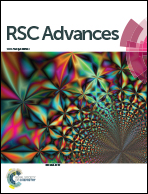Pulse electrodeposition and corrosion behavior of Ni–W/MWCNT nanocomposite coatings
Abstract
In this study, Ni–W/multiwalled carbon nanotube (MWCNT) composite coatings were successfully deposited on the surface of a C45 steel sheet by pulse current electrodeposition. Particularly, a uniform dispersion of MWCNTs in the plating electrolyte bath is indispensable. To achieve this main point, MWCNTs were modified by acidification, and coupled with introduction of sodium dodecyl sulfate to the plating bath. Scanning electron microscopy (SEM) and X-ray diffraction (XRD) were employed to characterize the morphology and structure of the composite coatings. The corrosion behavior of the composite coatings on steel was investigated by polarization curves and electrochemical impedance spectroscopy (EIS) in 3.5 wt% NaCl aqueous solutions with a pH of 10, 7, 3 and 10 wt% HCl solutions at various temperatures, which are representative of corrosive environments of relevance to many engineering applications. The results indicate that the incorporation of MWCNTs made the Ni–W composite coatings compact and uniform. Consequently, a higher corrosion resistance and thermal stability of Ni–W/MWCNT deposits were obtained. The optimal concentration of MWCNTs in the bath is 2 g L−1.


 Please wait while we load your content...
Please wait while we load your content...